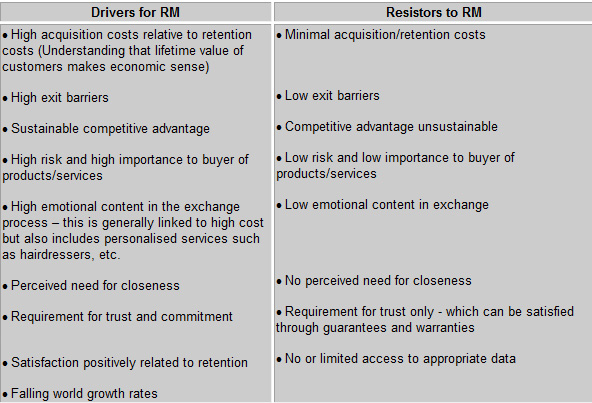
Elements of Drivers and Resistors to Relationship Marketing:
Drivers for RM:
- High acquisition costs relative to retention costs (understanding that lifetime value of customers makes economic sense)
- High exit barriers
- Sustainable competitive advantage
- High risk and high importance to buer of products/services
- High emotional content in the exchange process – this is generally linked to high cost but also includes personalised services such as hairdressers etc.
- Perceived need for closeness
- Requirement for trust and commitment
- Satisfaction positively related to retention
- falling world growth rates
Resistors to RM:
- Minimal acquisition/retention costs
- Low exit barriers
- Competitive advantage unsustainable
- Low risk and low importance to buyer of products/services
- Low emotionel content in exchange
- No perceived need for closeness
- Requirement for trust only – which can be satisfied trough quarantees and warranties
- No or limited access to appropriate data
Principle:
List the drivers and resistors to Relationship Marketing
Issues:
Customer preference: Personal motivate, business legitimate
Two essential characteristics:
- Both parties perceive and acknowledge a relationship exists
- The relationship is meaningfull in that both parties recognise it to have special status and that it is more than occasional contact
Blois (1997) Gronroos (1995):
- Trust & Commitment between people rather than firms
Applications:
To identify the appropriateness of RM in an organisation
Source of Drivers and Resistors to Relationship Marketing:
Egan (2005)






